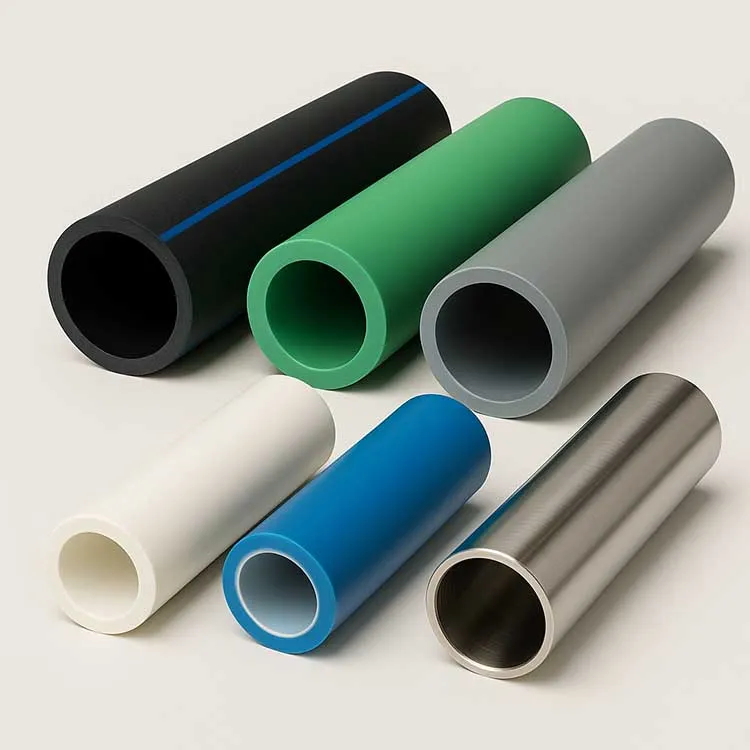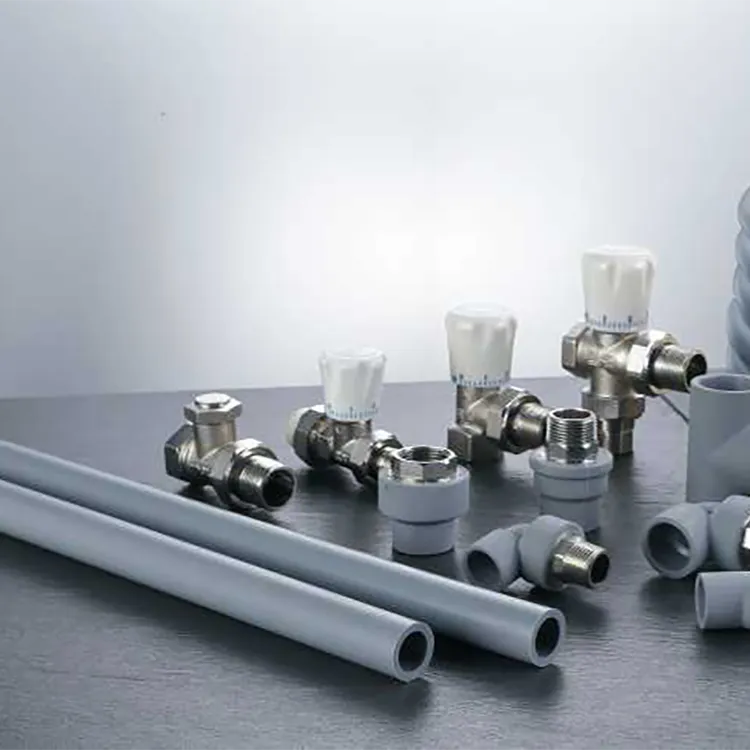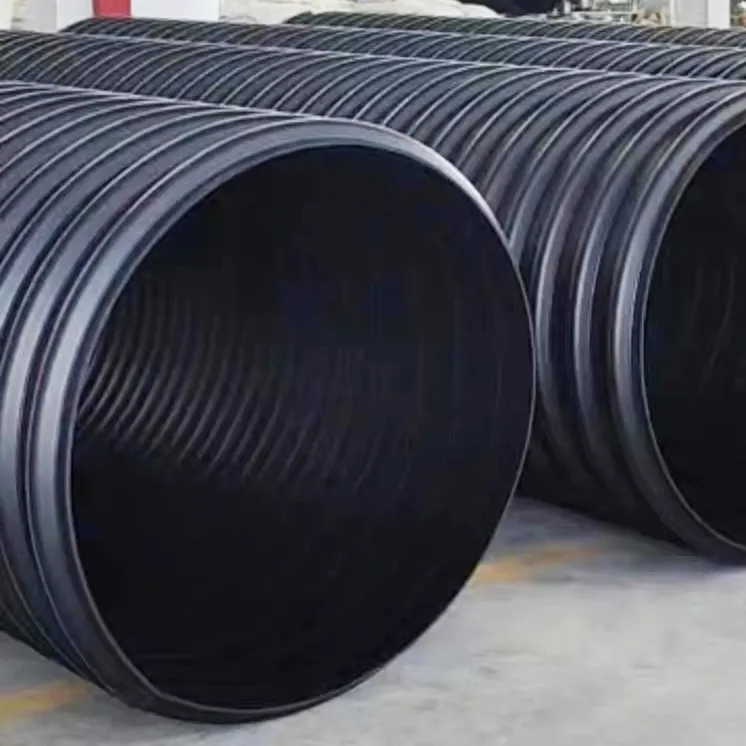In residential construction, the underground drainage system is one of the key elements to ensure the hygiene and comfort of residents' living environment. 110mm PVC pipe, as a common pipe material for residential underground drainage systems, is widely used in the layout and connection of drainage pipes. Its strengths lie in its robust construction, corrosion resistance and easy installation process.
Features and advantages of 110mm PVC pipe:
durability
The 110mm PVC pipe is made of high-quality polyvinyl chloride material for excellent durability. It can withstand the pressure and load of the underground environment and maintain long-term stability and reliability.
The 110mm PVC pipe is made of high-quality polyvinyl chloride (PVC) material, which has excellent durability and is able to withstand pressure and loads in underground environments. Exact numbers may vary by manufacturer and product model, but based on industry standards and test data, here are some typical durability metrics:
Pressure Bearing Capacity: 110mm PVC pipes are usually designed to withstand a certain amount of internal and external pressure. According to test data, a typical 110mm PVC pipe is able to withstand water pressure in the range of approximately 10 to 16 bar (1.45 to 2.32 psi). This makes it suitable for general residential subsurface drainage.
Flexure resistance: 110mm PVC pipe has a certain degree of flexure resistance and can withstand a certain degree of deformation and load in the underground environment. According to tests, a typical 110mm PVC pipe has a deflection (deflection) ranging from 5% to 7% under standard test conditions, which means that it can accommodate certain soil movements and foundation changes.
Corrosion resistance
The 110mm PVC pipe is made of PVC material, which has excellent corrosion resistance and can resist the erosion of chemicals and waste water in the groundwater environment. This enables it to maintain long-term stability and reliability in underground environments.
It should be noted that the specific durability data may vary due to factors such as product quality, manufacturing process and usage conditions. In practical applications, it is recommended to conduct evaluation and decision-making based on the technical specifications of the selected product and the data provided by the manufacturer. In addition, in accordance with relevant national or regional standards and specifications, correct installation and maintenance also play an important role in the durability and performance of 110mm PVC pipes.
PVC material has excellent corrosion resistance and can resist the erosion of chemicals and waste water in the groundwater environment. This makes the 110mm PVC pipe an ideal choice for residential drainage systems where corrosion resistance is required.
The corrosion resistance of PVC material is one of the important characteristics of 110mm PVC pipe in residential drainage system. The following are specific instructions on the corrosion resistance of 110mm PVC pipes:
Resistance to chemical substances: PVC materials can resist the erosion of various chemical substances in the groundwater environment, including general wastewater, acid-base substances and some common chemical additives. For example, 110mm PVC pipe has good resistance to common acids (such as hydrochloric acid, sulfuric acid) and alkalis (such as sodium hydroxide).
Saltwater and seawater environments: 110mm PVC pipes are also resistant to saltwater and seawater environments. This makes it reliable for use in coastal areas or in residential sewerage systems where brackish water needs to be treated.
Conductivity and electrochemical corrosion: Due to the non-conductivity of PVC material itself, 110mm PVC pipe shows better resistance in electrochemical corrosion. It does not corrode due to electrical current or electrochemical reactions.
It should be noted that the specific corrosion resistance will be affected by many factors, including the quality of the PVC material used, the type and content of additives, environmental conditions, and operating time. Therefore, when choosing a 110mm PVC pipe, it is recommended to refer to the technical specifications and relevant test data provided by the manufacturer to ensure that it meets the corrosion resistance requirements of the specific environment and application.
In general, due to its excellent corrosion resistance, 110mm PVC pipe has become one of the ideal choices for residential drainage systems with high corrosion resistance requirements, and can maintain stability and reliability in the groundwater environment for a long time.
Easy installation
The 110mm PVC pipe is lightweight, flexible and easy to install. It can be connected to other pipes and fittings with simple connection methods such as rubber seals, adhesives or heat-melt connections, allowing for a fast and reliable installation process.
The 110mm PVC pipe is lightweight, flexible and easy to install, which makes its installation in residential underground drainage systems quick and easy. Here are the specific instructions and some relevant installation data:
Lightweight design: 110mm PVC pipe is relatively light compared to other material pipes, which makes the handling and installation process more convenient. Its lightweight design reduces manpower requirements and labor intensity during installation.
Flexibility: 110mm PVC pipe has a certain flexibility and can adapt to bends and corners in underground piping arrangements. This flexibility allows installers to make adjustments and connections to meet the requirements of different drainage systems.
Simple connection methods: 110mm PVC pipe can be connected with other pipes and fittings through a variety of simple and reliable connection methods. Here are some common ways to connect:
Rubber Seal Connection: This connection uses a rubber seal to connect two pipes or pipes and fittings. The rubber sealing ring can ensure the tightness of the connection and prevent water leakage.
Adhesive connection: This connection method uses a special PVC adhesive, and the pipes and fittings are connected with each other after applying the adhesive to form a firm connection. Adhesive connections need to wait for a certain drying time to ensure the stability of the connection.
Hot-melt connection: This type of connection uses hot-melt equipment to heat the end of the pipe and heat-melt it with other pipes or fittings. Hot melt connections provide a very strong and airtight connection.
Note that specific installation and connection methods may vary depending on local building codes and manufacturer's recommendations. During the installation process, following the relevant installation guidelines and using proper tools and materials is the key to ensure the successful installation of 110mm PVC pipe.
Specific application cases:
The following are several specific application cases of 110mm PVC pipes in residential underground drainage systems:
Household sewage discharge: 110mm PVC pipe is widely used in household sewage discharge system. Waste water collected from facilities such as kitchens, bathrooms and laundry rooms is discharged through these pipe systems to sewers or sewage treatment facilities.
Rainwater Drainage: 110mm PVC pipe is also used for the rainwater drainage system of the residence. By channeling rainwater from roofs and other rainwater collection areas into 110mm PVC pipes, rainwater can be efficiently discharged to sewers or rainwater collection facilities.
Underground foundation waterproof and drainage: 110mm PVC pipe plays an important role in the waterproof and drainage of residential underground foundations. By channeling ground water and drainage seepage into 110mm PVC pipes, it can effectively keep basements and underground structures dry and safe.
In conclusion:
110mm PVC pipe plays an important role in residential underground drainage system. Its durability, corrosion resistance and easy installation process make it a common plumbing material in residential construction. Through the reasonable design and installation of 110mm PVC pipes, the efficient operation of the residential underground drainage system and the improvement of the quality of life of residents can be ensured.



981.webp)

 (1)379.webp)

294.webp)
476.webp)
420.webp)
146.webp)
460.webp)
287.webp)
274.webp)
688.webp)


